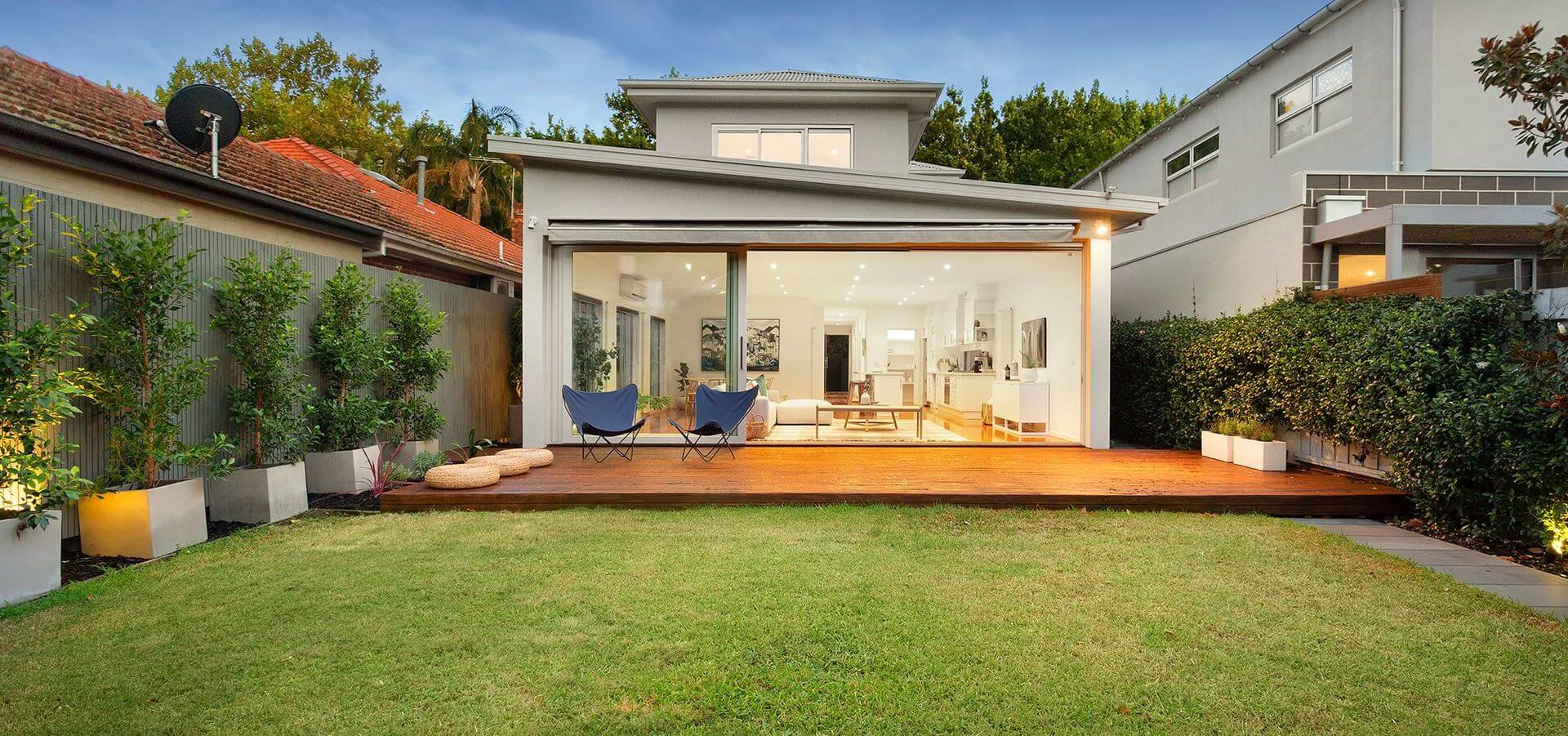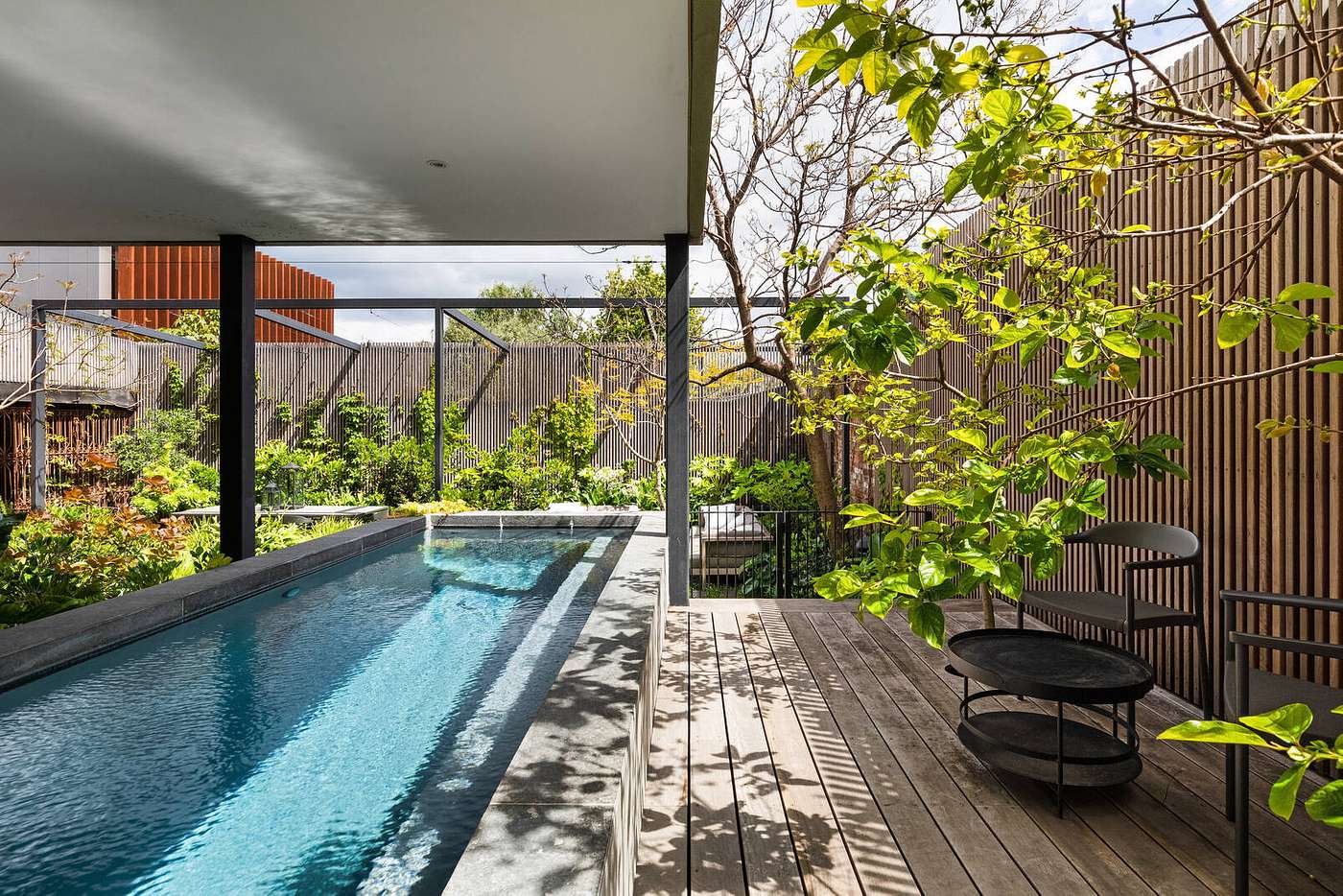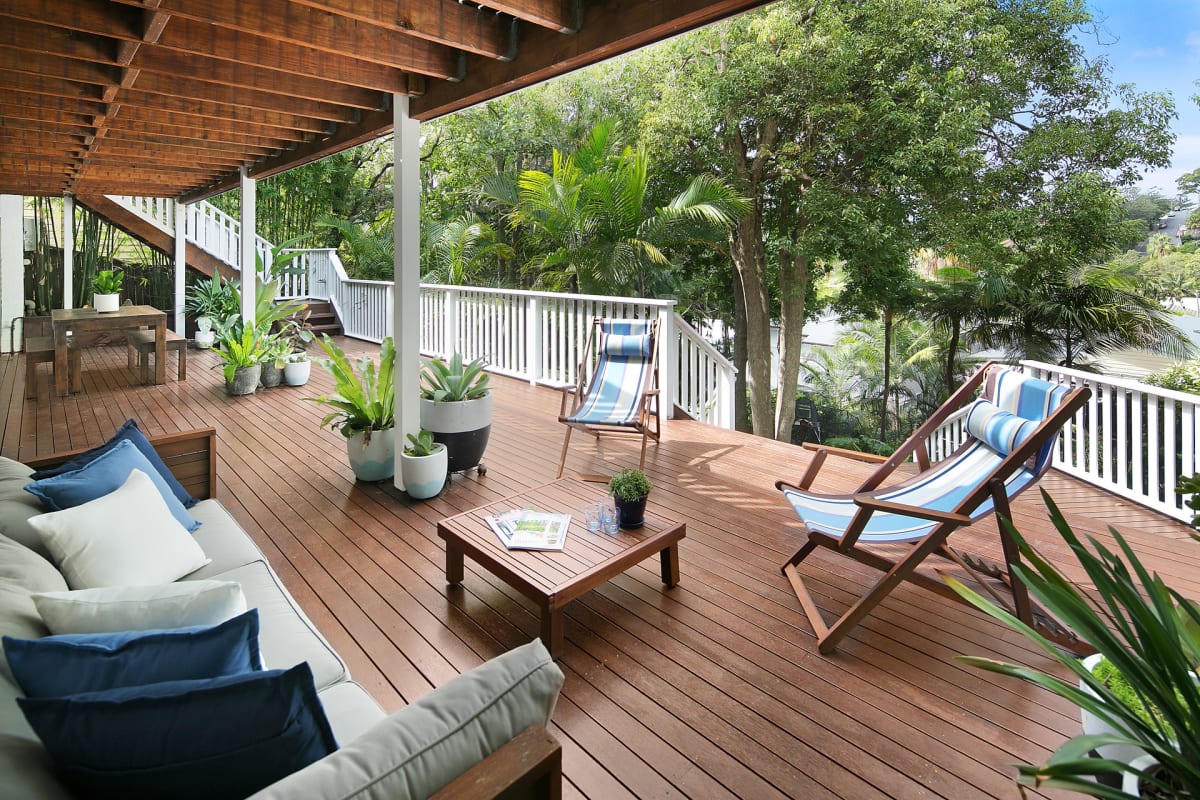Adding an outdoor area at home is probably a goal for a lot of homeowners this year. Building it yourself is an excellent way to improve your home’s value, liveability and visual appeal with minimal expense. It’s also a fantastic way to learn a new skill and feel a real sense of achievement about your home’s appearance.
However, when embarking on a DIY decking project there are a lot of things that you need to research and gain knowledge of before you undertake the physical building process. Here’s everything you need to know when taking on a DIY deck in your backyard.

Topics in this article:
Advantages of DIY decking kits
Building with a decking kit has a number of advantages over hiring a professional builder. When you use a kit to build your deck you won’t have to calculate the floor load, width of your joists and bearers or any other engineering concerns that may come into play when building a new structure. Decking kits are designed for DIY enthusiasts and these kinds of considerations have all been taken care of in the design process, so there’s no need to spend a lot of time on the design and planning of your decking substructure.
Kits are always priced per panel and base so you can establish very quickly what you need to spend without having to make a list of materials and asking a builder for an itemised quotation.
Most importantly, decking kits contain everything you need to build a deck, from the boards themselves to joists, bearers and posts as well as brackets, fasteners, bolts and decking screws, taking the hassle out of installing a new deck.

Before buying a kit
Before you dive into your DIY project it makes sense to do a small amount of preparation to make sure you’re allowed to build a deck, and secondly that it’s safe to do so.
Contact your local council or shire to see if you need to submit an application for your project. Rules vary from region to region, however generally decks over one metre off the ground and those in bushfire areas require approval.
There are other factors like the distance from a boundary, and strata rules (when and if they apply) that can also affect your grand DIY ambitions. Further to this you will likely be digging holes for your posts so it is always wise to check with your local authorities about whether there are any pipes, cables or hazards beneath the relevant area.
Lastly, before buying your kit you’ll need to measure the area you want to build on. Take note of the fall of the land over your proposed deck dimensions as this will be important when it comes to getting the right sized posts required to keep your deck level.

Decking material options
Generally, the substructure of decking is made of treated pine, and in some instances steel. Steel is normally used when you have a difficult site, either high up or requiring large spans, so it’s not so common for DIY applications.
The main decision you’ll need to make is the selection of decking boards. Most kits will come with a standardised option for decking boards, however some companies will allow you to select the timber of your choice and price your kit accordingly.
Different types of decking materials have a number of pros and cons. Your basic choices are softwoods, such as treated pine. Then you have imported hardwoods such as merbau and kapur or Australian hardwoods, such as spotted gum, blackbutt or ironbark.
Softwood decking is generally the cheapest option, and is very easy to work with. You can stain softwood decking virtually any shade, so it works in most applications, however it doesn’t wear as well as hardwood decking and requires more maintenance over its lifespan.
Imported hardwoods are generally excellent high-performance timbers that are largely impervious to water and degradation. This is the key to their popularity, along with their beautiful colours.
One thing to watch out for with merbau in particular is to ensure that the area below the deck will not be adversely affected by tannin bleed as this can stain driveways and pavers if your timber is not effectively washed and stained before installation.
Australian hardwoods come in a wide variety of species, grains and colours. Some of them have really vibrant appearances and make for beautiful decks. In terms of performance Aussie hardwoods are also excellent products, and the price generally reflects this.

How much does DIY decking kit cost?
This will vary widely based on the materials used, the type of kit that you choose and where you buy it from.
There are a number of decking kits that you can buy from Bunnings and other large hardware chains that are essentially pre-made tiles that you can simply fix together or lay down.
If you’re looking to flex your building muscles and make something a little more permanent, you can likely find decking kits from most timber merchants.
Softwoods, a timber company based in Adelaide, ships DIY decking kits Australia wide and has a handy online decking tool that you can use to design your kit and have a price emailed to you within five minutes.

Steps to build your DIY deck
Once you have purchased your decking kit, you will need to build it. Most decks work along similar lines:
- Your first step is to clear your site and mark out where you want your posts to be. You then need to dig out your post holes and fix your posts in place.
- Once you have done this it’s time to bolt your bearers to your posts. Depending on your structure and it’s engineering you may have single or double bearers.
- Once your bearers are in place you then lay out and fix your joists above them. Joists run across the bearers at 90 degrees.
- Finally, you can add your decking boards, which run across your joists, again at 90 degrees (they will run in the same direction as your bearers) it’s important to leave about a 10mm gap between your decking boards to allow for effective ventilation and drainage of your deck.
- Once you have finished with the basic structure of your deck you can add balustrades, stairs, benches and any number of decorative features you like.
Hopefully you have found this to be an informative guide and something that will help you succeed in your DIY decking project.
For more advice on backyard decking take a look at our step-by-step guide to deck restoration and how to decide whether you should you stain or oil your deck.





How many types of wood materials are there for making a home deck?